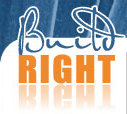Load paths
The load path is simply the direction in which each consecutive load will pass through connected members. The sequence commences at the highest point of the structure working all the way down to the footing system, ultimately transferring the total load of the structure to the foundation.
Ultimately, the lowest structural member must be strong enough to support all members above it. This is why engineers often design the uppermost members first and progressively work their way down the structure following the load path.
Load path components in a concrete structure
Part of the load path in a typical multi-storey reinforced concrete structure is made up of the following components.
Select each labelled area to find out more information about each component.
Load path in a domestic structure
The direction that loads are transferred through a structure is important and must be identified.
A simple domestic structure works on similar principles as a large concrete structure although the components are different:
- the foundation supports the footings
- the footings support the flooring structure which consist of bearers, joists and flooring
- the stud walls and bracing transfer their load to the flooring
- the roof trusses support the battens which support the roof cladding and this load is transferred to the walls.
